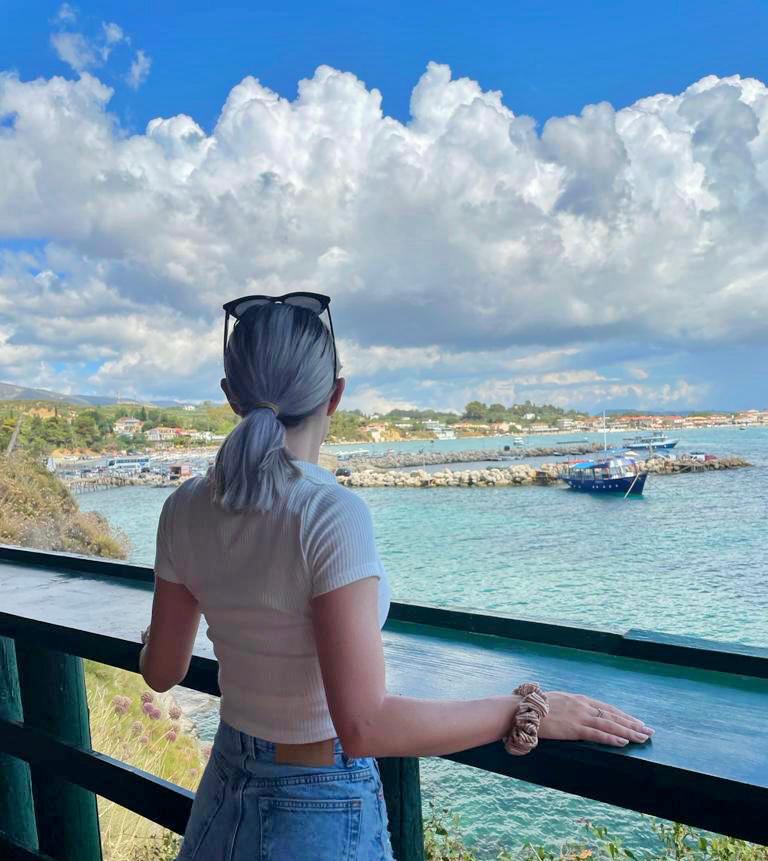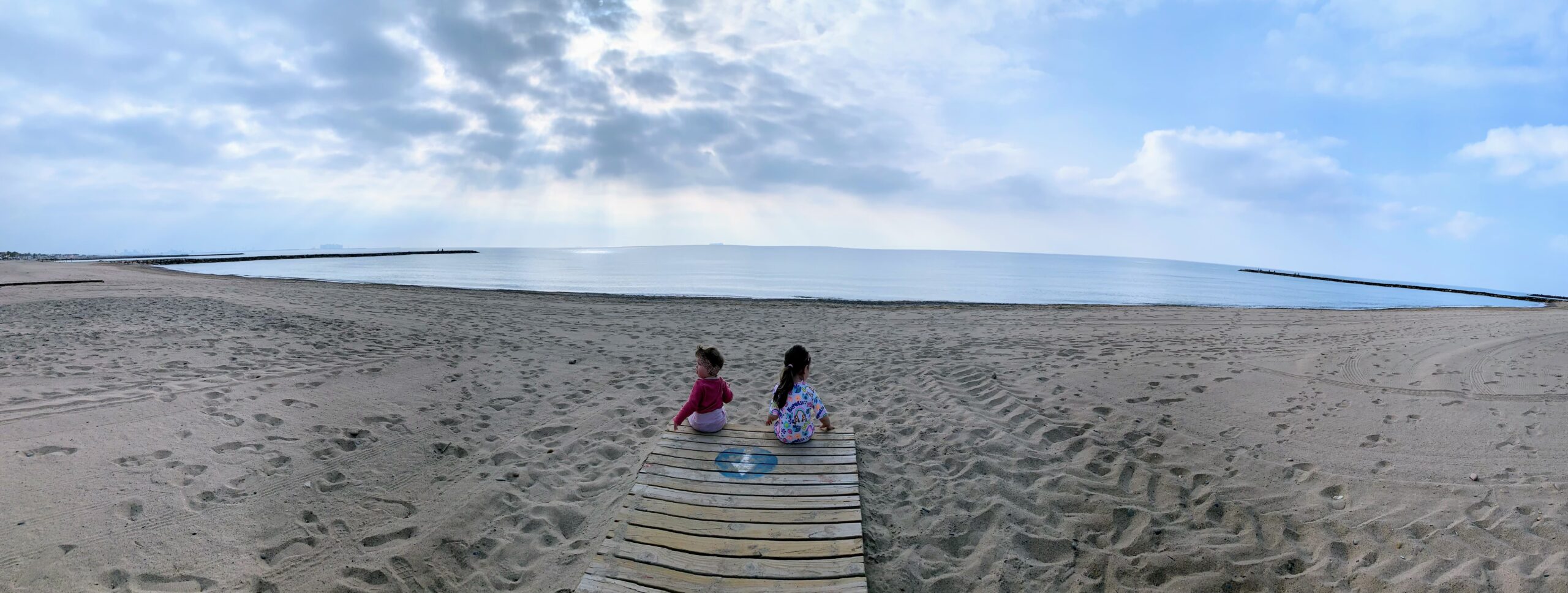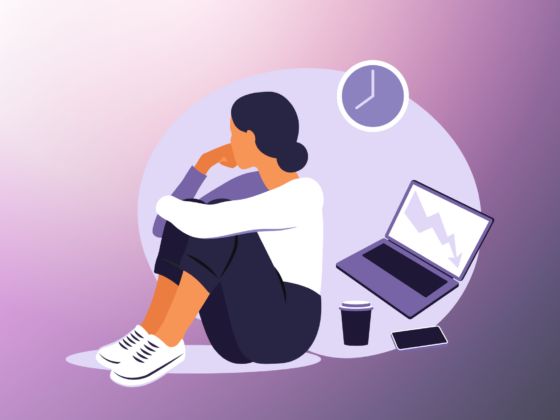As summertime has officially started, most of our colleagues are enjoying their time off in the best way they can: traveling abroad, dedicating time to relaxation, or personal projects.
In this article, we want to share some pieces of advice from our colleagues on how they plan and take their paid time off while enjoying some postcards from our vacations.
The Importance of Time Off
The importance of time off and work-life balance has become even a hotter topic after March 2020, when most of us went to work from home full-time and didn’t think taking time off was an important need anymore.
Which of course, turned out to be wrong. The prolonged time of working from home and not taking time off, gave birth to a new type of burnout, according to Forbes.
Taking time off of work can reduce stress, improve our mental health, and – although not working – it can make us more productive and creative when getting back to the office.
Paid Time Off at Fabrit
On average, each colleague has 23 days of paid time off each year. This does not include national holidays (maximum 14 days/year) or sick days.
For each year spent in the company, each colleague gets an extra day off.
So PTO days are not fixed for us.
When it comes to taking some time off, we made the process as seamless as possible through our internal, custom-made HR management platform. Colleagues have to fill in a very basic form, requesting time off, after discussing it with their team.
Furthermore, the HR platform shows stats of the PTO for each colleague. On our individual personal dashboard, we can see when we took our last day off, and what the planned ones look like for the next 3 months. We also plan to implement “gentle reminders” for when extended periods of time pass without a day off.
As a team, we understand the importance of time off – especially after over two years of working from home full-time. Our colleagues are flexible and highly supportive; they can quickly adapt to a different workload if someone needs a break.





Whenever You Need It
Although most of us take advantage of the hot summer days and take time off around this period of the year, days off are available whenever we want.
There are no policies, or limitations about whenever someone can take a few days off.
Our only expectation is to discuss our needs with the team we’re part of. In this way, we can cover for our colleagues, prevent bottlenecks and ensure the development process for our partners goes smoothly.
Short vs Long
When it comes to the length of time we prefer to take time off, we identified two main preferences:
- short vacations – to prolong a weekend, for example
- long vacations – around or over a week, usually taken during summertime
Each type accommodates different needs and we will discuss them further, based on the insights we have from our colleagues.
Short Vacations
Short vacations are a couple of days off, usually linked with the weekend, a national holiday, or a long weekend.
We like using these quick breaks for either short trips (or city breaks), personal projects or just to recharge.
Team “short vacations”, says although shorter, these quick time off periods help them take breaks more often, which helps them boost their energy. They feel more motivated, creative, and productive when they spread their PTO throughout the year, rather than one long summer vacation.
And a study by The Journal of Happiness tends to agree with our colleagues’ insights. They say the overall well-being increases after the second day of vacation. So taking more frequent vacation days will boost your well-being.
Long Vacations
Based on our colleagues’ preferences, a long vacation is around a week or over.
This longer period of PTO is often used for the annual summer vacation, traveling abroad with family or friends.
Some of us prefer to work a few months in a row and reward ourselves with a longer vacation.
The previously mentioned study notes that the peak of recharging is around the 8th day of the holiday, which is perfect for those of us who enjoy longer time off.
This is also confirmed by some of our colleagues, who say 10 days off benefit them the most since they can fit multiple trips during this timeframe.
While this is viewed as a “traditional” way of taking time off, it works very well for some of us.





Tips and Tricks
We have other small tips or tricks when it comes to our time off. Based on our workload or simply overall state, we might squeeze a couple of days off based on these tips. Keep reading, there is a tip for everyone in our list!
- when a project ends – if it was a big project or we invested a lot of energy in it, some of us enjoy a couple of days off to recharge and come back with new energy for a new project
- when the client takes time off – some of us work on smaller projects, which allows a great relationship to form between the client and the engineers working on the project. Sometimes, if the client is off, and the workload is flexible, a day off is welcomed
- when another colleague takes time off – a few colleagues were classmates at university, or friends before they became part of the Fabrit life. They took their friendship to the next level by working together, but also going on holiday together
- don’t come back on Monday – Monday is probably the busiest day of the week. Some of us discovered that returning to the office on a Thursday benefits us since we don’t have to deal with the Sunday blues anymore
- pick all-inclusive service if you travel with kids – colleagues with kids told us all-inclusive service is a lifesaver when traveling on holiday with children: everything is covered, the young ones are entertained and parents are more relaxed
- travel with like-minded friends: in this way you can be sure all of you will enjoy similar things
Last but not least, we want to leave you a short list of some of our favourite places we visited so far: Tuscany (Italy), Amsterdam (The Netherlands), Berlin (Germany), Malaysia, and Singapore.
Over to You
We hope you found some inspiration and that you’re already packing for bags for a relaxing trip.
There’s no argument standing about why time off shouldn’t be prioritized and used accordingly when we want or need it.
Now we’d like to learn from you: do you have any strategies, tips, or tricks on how to take time off and maximize it to come back to the office fully recharged? Let us know in the comments!





